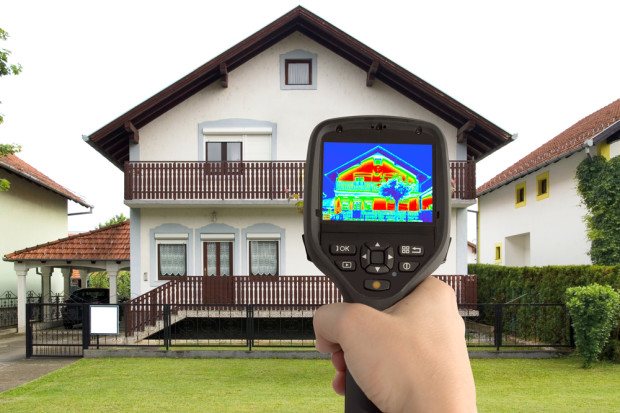You have the thermostat cranked up and the furnace is definitely running, but your Columbia, Maryland, home is still chilly and drafty. If this sounds like a familiar scenario, then you’re probably experiencing heat loss in your home. A number of factors contribute to home heat loss, like air leaks or damaged ducts, but with a mix of DIY projects and professional help, you can address them all. Read on to learn more about the common sources of heat loss in the home.
Air Leaks
By air leaks, we don’t mean the cold air that slips underneath your front door, although we’ll address that, too. Air leaks happen in all areas of your house. They happen around your plumbing, your electrical outlets, and even your light installations. Basically, anywhere that a pipe or a cord goes through the wall or into the ceiling is a potential air leak.
Fixing all the air leaks in your house is a difficult task to do on your own, but you can always improve the situation. A neat trick is to turn off your HVAC system and light a candle. Hold the candle near electrical outlets, plumbing fixtures, and pipes. If the candle gutters or the flame sways towards the fixture, you have an air leak. Caulk will fix the plumbing leaks, and you can insulate your outlets to stop leaks there.
No Attic Insulation
The attic and the walls are also large culprits when it comes to home heat loss. The attic stairs, the windows, the walls themselves, and the roof all may be lacking insulation. Hot air rises straight up into your attic, where it escapes through any number of channels. Insulating the attic tends to be cheaper than insulating your walls, and it’ll take care of one potentially large source of heat loss.
Damaged Ductwork
The heat your furnace produces may not be reaching your rooms at all if your ductwork is damaged. Go into the attic and the basement and take a look at the exposed duct work. Do you see any small holes or other signs of damage? What about streaks of dust along the walls near the ducts? Even if you don’t see these problems, your thermostat setting can clue you in: if it’s significantly colder in your house than what your thermostat reports, you may have leaky ducts.
When ductwork is the problem, a professional HVAC technician can take care of it. Don’t try to repair the ducts yourself, and definitely don’t use duct tape. Have the technician inspect the rest of your HVAC system, too. An old or sporadically maintained furnace probably isn’t running as efficiently as it could be. A little maintenance can go a long way when it comes to keeping the house warm.
Window and Door Drafts
Cracks around the windows and doors are an extremely common source of heat loss. Thankfully, they’re relatively easy to fix. What you need is weatherstripping. It’s a thin strip made of myriad materials that you line your windows and doors with. It keeps air from getting in or out, and plugs up any places where drafts might be getting in and stealing your heat.
Weatherstripping comes in vinyl, foam, felt, metal, rubber, or rope caulk. Each has advantages and disadvantages, especially when it comes to what kind of windows you have. For interior doors, you can also get a door sweep, which is a long u-shaped piece of fabric or vinyl that slides beneath your doors and plugs up the gap under them. It doesn’t do so well if the door swings open onto a carpeted room, but is great for hardwood and tile floors. You can also get a door sweep for your exterior doors as well.
When you’re experiencing home heat loss, make sure your furnace and ductwork aren’t the culprits. At Griffith Energy Services, we can look at your HVAC system, perform any necessary repairs, and ensure your thermostat is calibrated properly. If you lose heat in the middle of the night, that’s no problem. Call for an emergency technician at any time. Reach us at 888-474-3391 for any of your home heating needs.
Image provided by Shutterstock




